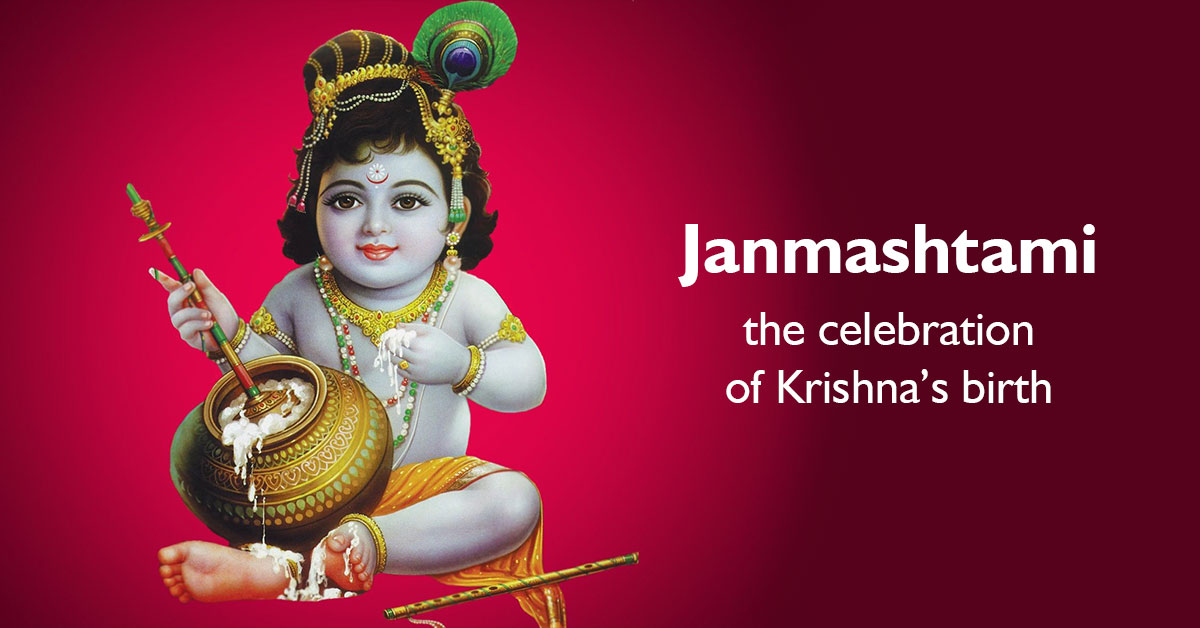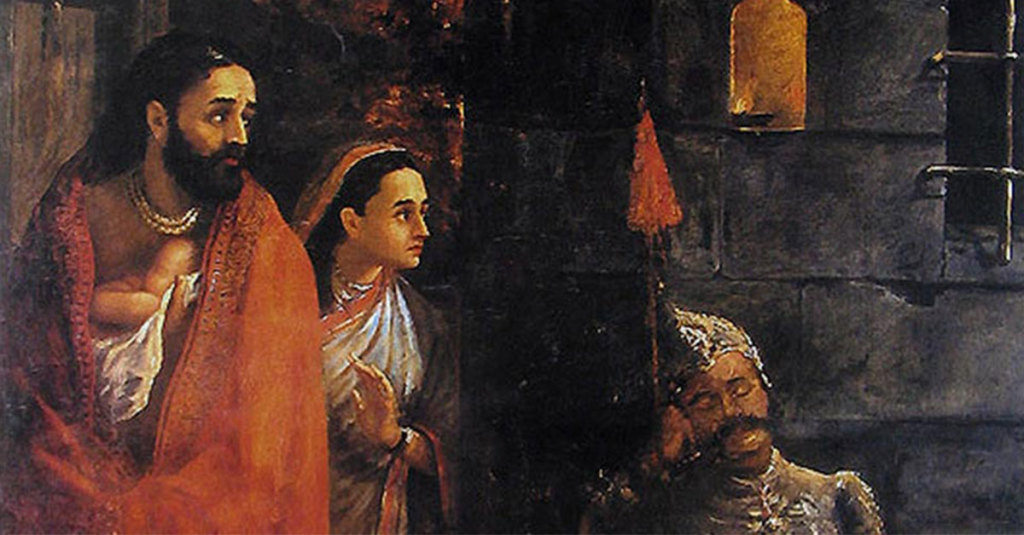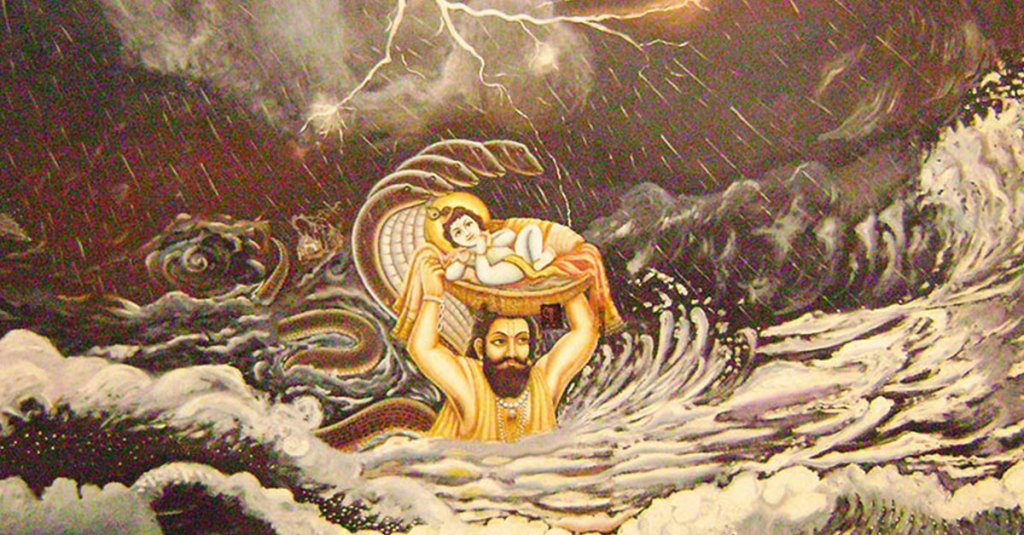Janmashtami celebrates the birth of Lord Krishna, who is mentioned in the Hindu religious scriptures as God Almighty. To Krishna bhakts, it is a day of deep spiritual regeneration, commemoration, and observance. Krishna is the most mischievous and affectionate son, the most sympathetic friend, and the most passionate lover. And on Janmashtami, all devotees celebrate the Lord’s birth for these special qualities.
Krishna Janmashtami also called Shri Krishna Jayanti, Gokulashtami and Ashtami Rohini is observed on the eight day of Krishna Paksha in the month of Bhadrapada. Since Devakinandan was born at the stroke of midnight, the festival is observed for two days. The first day is known as Krishnashtami and the next day is called Kalashtami. The celebrations in Vrindavan are popular, brilliant, and vivid. Read about the story of Krishna’s birth, the significance of Janmashtami, and how this festival is celebrated in the holy Braj.
Why Krishna’s Birth is a Miracle
The circumstances related to Krishna’s birth are extraordinary and miraculous. Kansa, the king of Mathura and maternal uncle of Shyamsundar was a tyrant and evil ruler. During the wedding ceremony of Devaki (Kansa’s sister) and Vasudeva, a divine foretelling claimed that the couple’s eighth son would spell death for Kansa. Hearing the divine prophecy, Kansa put both Devaki and his brother-in-law behind bars, tying them with chains and locks. Kansa decided to kill Devaki, but when Vasudeva promised that he would give up all the babies to Kansa as soon as they were born that the cruel king was somewhat appeased. Kansa killed all the six children of Devaki and Vasudeva. However, Balaram, the couple’s seventh child was saved because of divine intervention, when Balaram was moved from the womb of Devaki to that of Vasudeva’s other wife, Rohini.
When Devaki conceived Krishna, the eighth child, the surroundings were suffused with majestic beauty and benignity. And when Gopal was just to be born, the prison guards fell into a deep sleep as a result of which they could not witness the birth of Devakinandan. It was indeed a miracle with all the sentinels falling asleep and the chains, iron shackles, locks, and prison gates miraculously unlocking.
The Manifestation of Krishna as Vishnu
Gopal was born in the form of Lord Vishnu, dressed in beautiful jewels and silk, and carrying the sudarshan chakra, shankha, lotus, and club. Seeing this, Devaki and Vasudeva prayed so that Krishna looked like an ordinary baby and they could hide Him from Kansa. Hearing this, a divine voice advised Vasudeva to move Krishna to Gokul across the river in a basket and exchange Devakinandan with the newborn girl child born to Nanda and Yashoda.
The Stormy Night When Krishna Was Moved
On a dark and stormy night when the entire city was asleep and the Yamuna was in spate with the waters raging, Vasudeva moved out of the prison. He carried infant Krishna in a basket braving the turbulent river. The rain poured in torrents, but the water parted because of the storm, allowing Vasudeva to pass and transport Devakinandan safely to Gokul. Vasudeva held baby Krishna high over his head when crossing the Yamuna. Magically, a five-mouthed snake followed Vasudeva and covered infant Krishna from above with its hood to protect Him from the rain. Reaching Nanda’s house in Gokul, Vasudeva found its gates open, exchanged the babies as advised and returned to Kansa’s prison with Nanda’s and Yashoda’s baby girl. Thus, Krishna was left behind to be raised by His foster parents in Gokul.
Gokul Rejoiced the Birth of Krishna
With the break of dawn, when Nanda’s and Yashoda’s beautiful son, dark as a night and charismatic as the sun, was discovered, the people of Gokul celebrated Krishna’s birth.
When Kansa learned about the birth of the eighth child, he rushed to the prison, picked the baby up with an intention to kill, the girl child slipped from Kansa’s hand, rose above in the sky and manifested as Goddess Yogamaya. She laughed at Kansa and warned him that the eighth child was already born and would kill Kansa, and was safe in Gokul. Later, when Krishna killed His uncle, Devi Yogamaya’s prophecy came true.
Vrindavan Celebrations and the Dahi Handi Ritual
The celebrations related to the festival starts 10 days before Janmashtami. The temples in the holy town perform pujas and aartis to worship Gopal. The enactment of Ras Leelas and the sound of bhajans and bells make Vrindavan lively. Krishna bhakts from all over the globe flock to the city on the auspicious occasion of Janmashtami. A grand abhishek is performed at midnight in the inner sanctum of the Banke Bihari Temple. The deity of Devakinandan is given a ritual bath with honey, milk, curd, water, and ghee. Once the abhishek is over, the Krishna idol is adorned with jewels and fine cloth and offered flowers, chandan, tulsi, balbhog, and itr religiously. And once Shri Krishna sits on the throne, the bhakts are allowed darshan from 2 am. This special darshan continues till 6 am in the morning.
Shri Krishna was extremely fond of butter as a child. Bal Gopal stole butter from the houses of the village folks, which is why He is also called ‘Makhan Chor’, escorted by His friends. That’s why the Dahi Handi ritual is so popular all over India and is also observed in Vrindavan and Mathura with a lot of zest, vigour, and energy. A pot of clay is filled with buttermilk and tied very high up in the air. Young boys create a human pyramid, and the boy who reaches the top breaks the Handi using a coconut and collects a cash prize.
So, come be a part of Janmashtami in the holy Braj. Explore Krishna’s land through a Krishnabhumi Holydays membership and spend 7 days in the holy town every year. Getting accommodation during the festive season is difficult. You can also raise your family where Krishna spent His childhood. Own one of the luxury apartments or villas in the temple township of Krishna Bhumi close to the proposed Vrindavan Chandrodaya Mandir.
Radhe Radhe!












